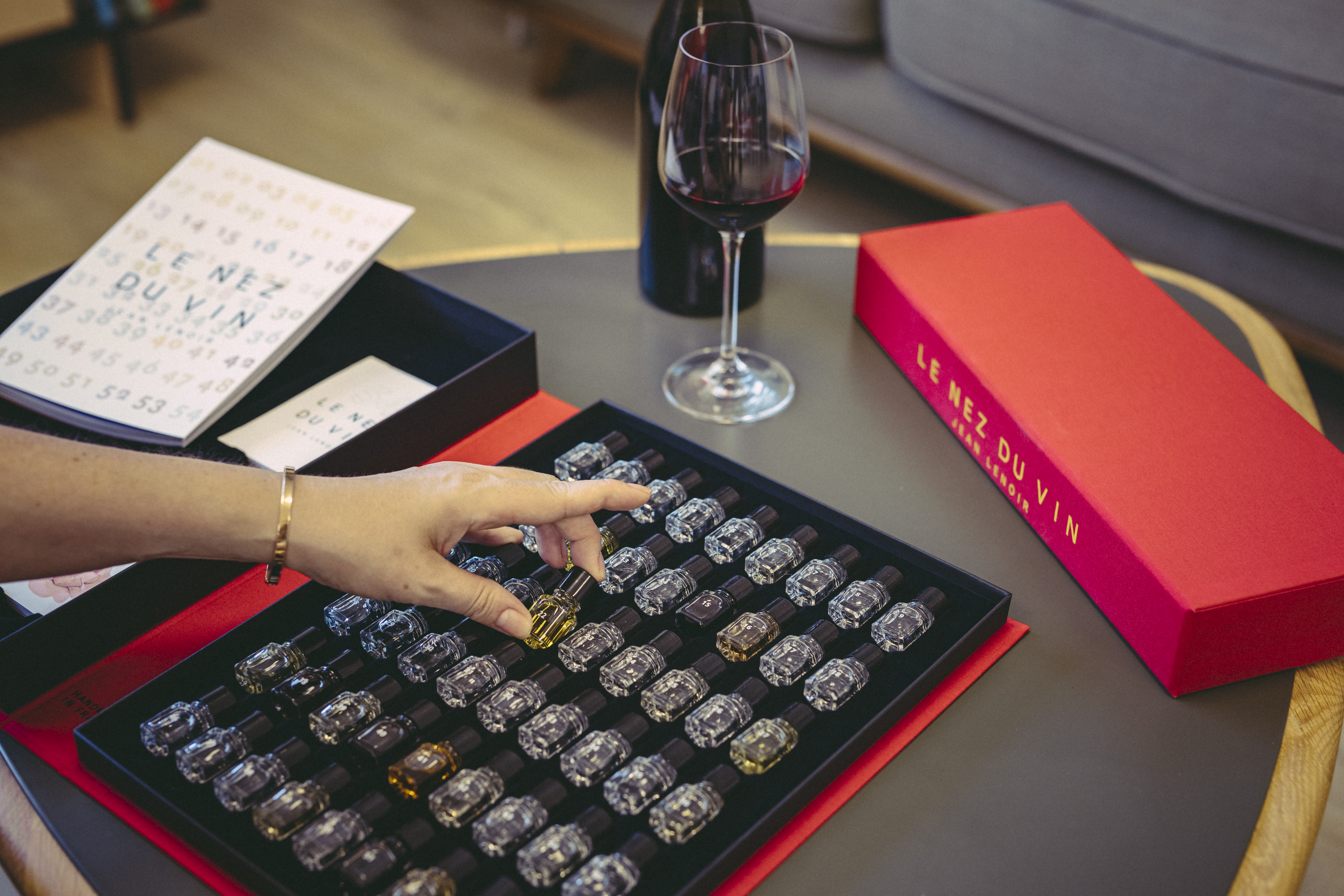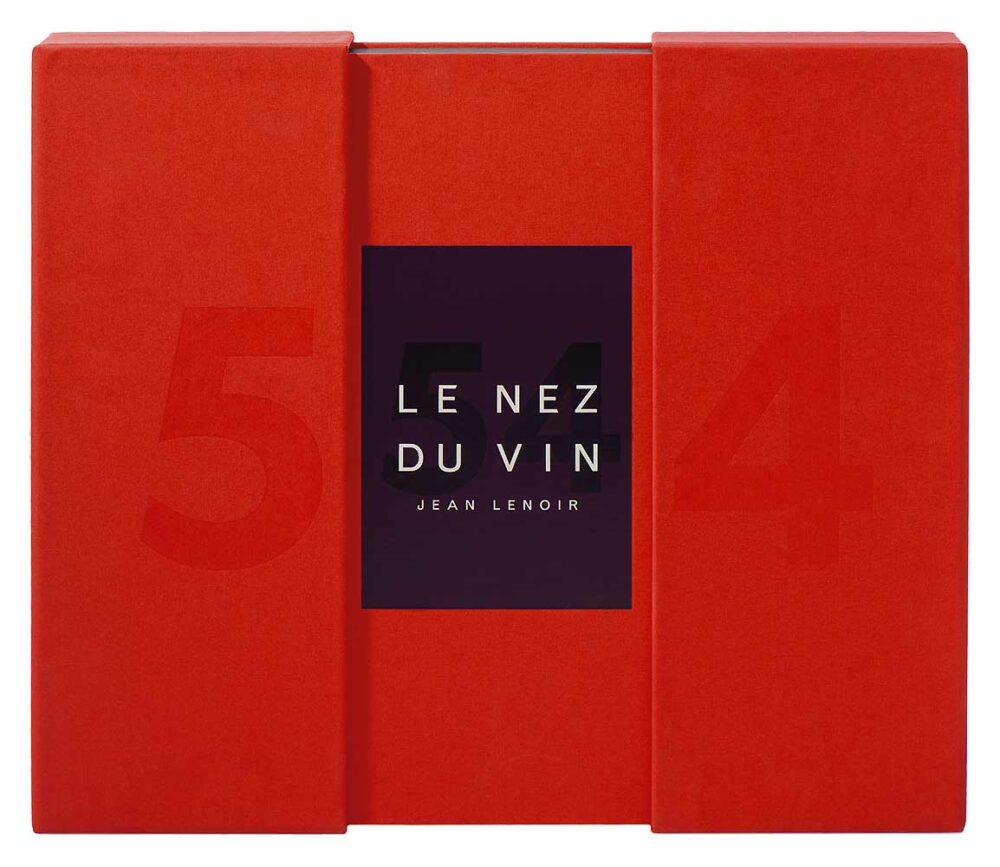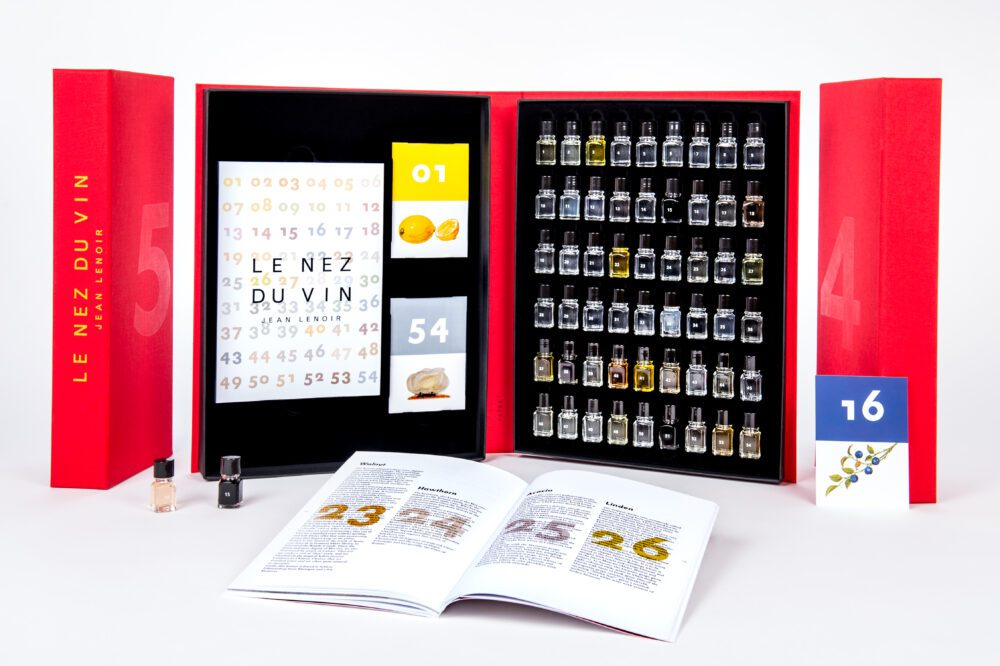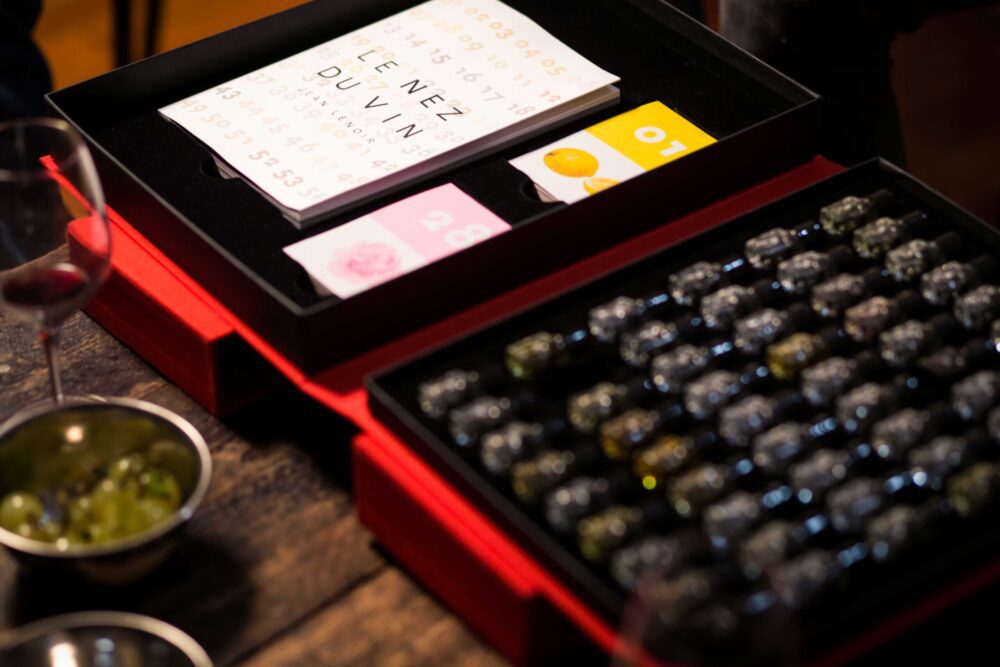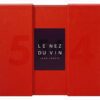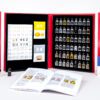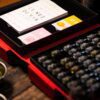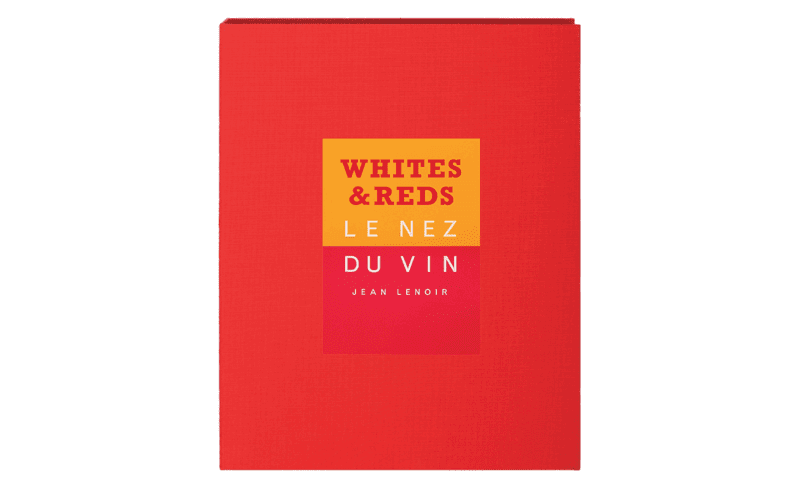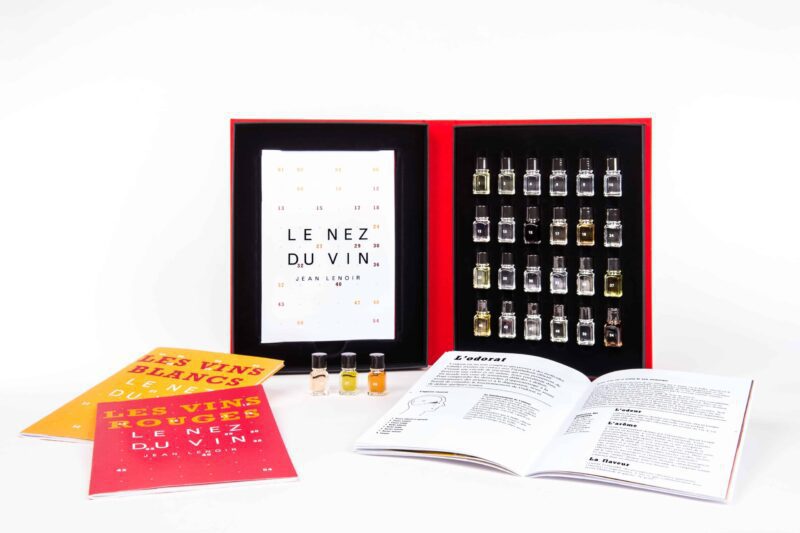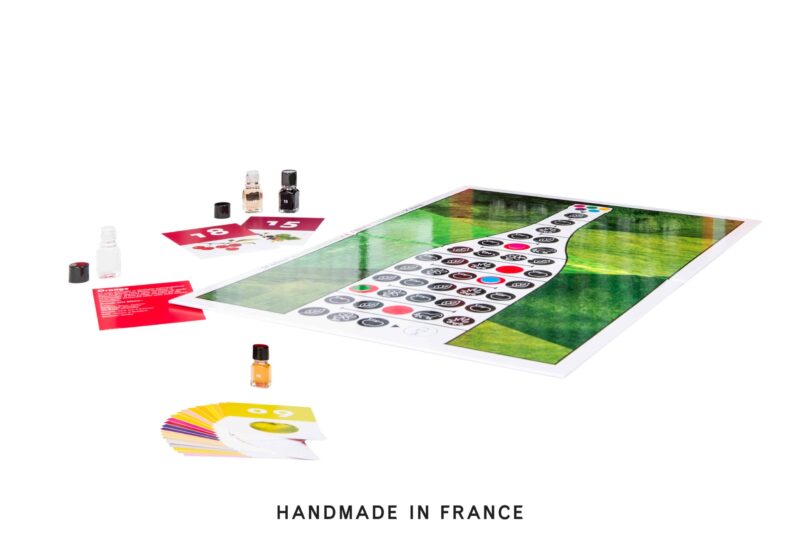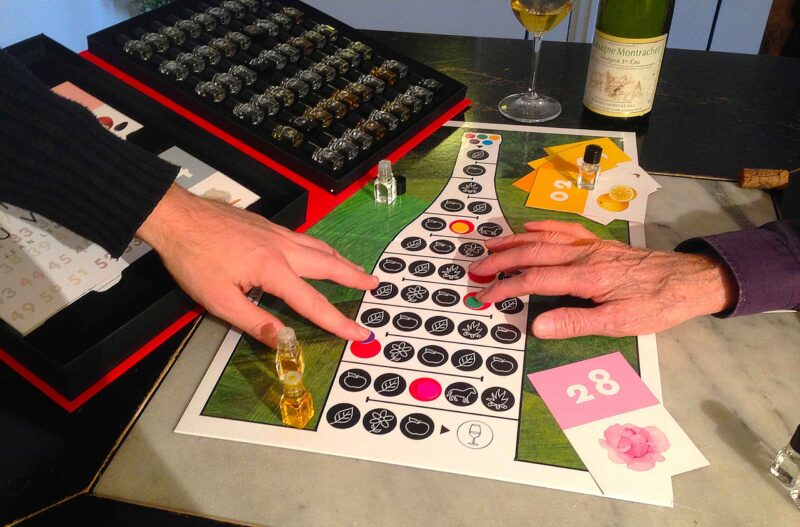Master Kit 54 aromas
- 54 high-quality, realistic and long-lasting aromas
- 54 cards summarise the link between the aroma and wine
- An illustrated book (120 pages) serves as an informative and engaging guide
319.00 € Inc. VAT
In Stock
319.00 € Inc. VAT
- 54 high-quality, realistic and long-lasting aromas
- 54 cards summarise the link between the aroma and wine
- An illustrated book (120 pages) serves as an informative and engaging guide
Delivery at €0.01 in mainland France for purchases from €35
 PayPal, 4 interest-free payments
PayPal, 4 interest-free payments
 Made in France. Fragrances guaranteed for 5 years.
Made in France. Fragrances guaranteed for 5 years.
A benchmark since its creation by Jean Lenoir in 1981
The aromas
54 aromas that express the rich diversity of the nose of a wine:
- Fruity notes: 1 lemon, 2 grapefruit, 3 orange, 4 pineapple, 5 banana, 6 lychee, 7 melon, 8 muscat, 9 apple, 10 pear, 11 quince, 12 strawberry, 13 raspberry, 14 redcurrant, 15 blackcurrant, 16 bilberry (blueberry), 17 blackberry, 18 cherry, 19 apricot, 20 peach, 21 marzipan, 22 prune, 23 walnut
- Floral notes: 24 hawthorn, 25 acacia, 26 linden (lime blossom), 27 honey, 28 rose, 29 violet
- Vegetal and spicy notes: 30 green (bell) pepper/capsicum, 31 mushroom, 32 truffle, 33 wine lees, 34 cedar, 35 pine, 36 liquorice, 37 boxwood (blackcurrant bud), 38 cut hay, 39 thyme, 40 vanilla, 41 cinnamon, 42 clove, 43 pepper, 44 saffron
- Animal notes: 45 leather, 46 musk, 47 butter
- Roasted notes: 48 toast, 49 roasted almond, 50 roasted hazelnut, 51 caramel, 52 coffee, 53 dark chocolate, 54 smoky note
The book
Regularly updated and enhanced with the expert guidance of scientific specialists in neurobiology and oenology, the book in the kit provides a wealth of information on the origins of wine aromas and their classification: What creates wine aromas? What information do they give about the grape variety or blend, the winemaking and ageing methods used, and the age of the wine itself?
It includes an overview of how the olfactory system works: What are the two olfactory pathways? What happens between our nose and our brain when we smell?
It guides you through how to use the aroma vials to recognise, remember and then identify the scents in a glass of wine: How should you practise and how often? What are the steps involved in describing a wine’s bouquet?
It is an invaluable tool for either novice or experienced wine tasters, detailing the aromatic profile of the main grape varieties and vineyards in France and around the world: What is the olfactory signature of Merlot or Riesling? What notes characterise the wines of Burgundy or the Rhône Valley?
It offers beginners and wine professionals alike indispensable knowledge on wine aromas.


Carmine red clothbound box, 38.2 x 29.4 x 5.5 cm (when closed), weight 3.750 kg
An aroma kit can be kept for up to ten years if stored in good conditions:
- the vials should be stored upright
- the kit should be kept away from sources of light and heat (e.g. radiators or sunlight)
